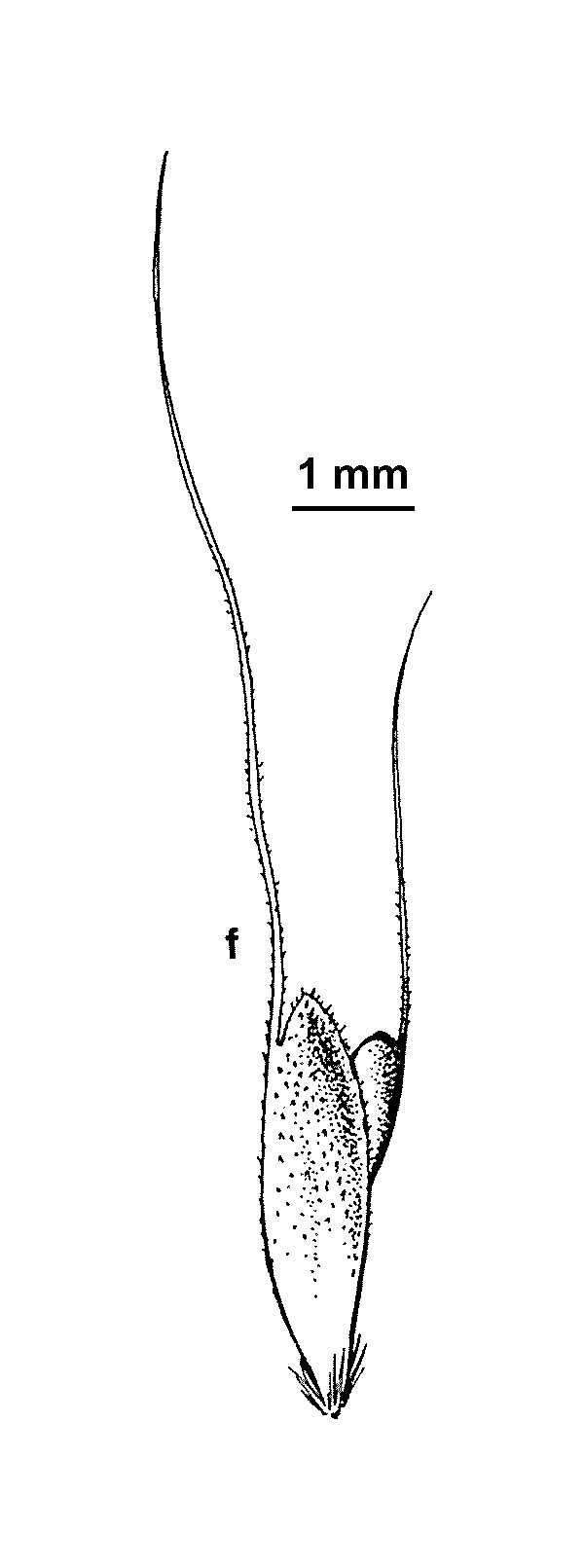Chloris ventricosa
R.Br. Plump Windmill-grassLoosely tufted or shortly stoloniferous perennial or biennial; culms erect, to c. 80 cm high; leaves glabrous or pilose, often somewhat glaucous; blade flat or folded, scabrous along margins and keel, to 20 cm long and 3 mm wide. Inflorescence an umbel of 3–7 spikes, 4–10 cm long, spreading widely, but often slightly flexuose. Spikelets with 2(–3) florets, the lower bisexual, the upper sterile, blackish at maturity; lower glume 1–1.5 mm, the upper 2–3 mm; fertile lemma very obtuse, exceeding upper glume by 0.5–1.5 mm, glabrous except for callus hair-tuft, hardened and scabrous toward the apex at maturity, awn 4–12 mm long; second (sterile) lemma cuneate, truncate, about half as long as first and enclosed for the greater part by it, awn of second lemma c. 2–5 mm long; third floret (if present) unawned. Flowers recorded Jan., May, Aug.
VVP, VRiv, NIS, EGU. Also SA, Qld, NSW. In Victoria, known by a few collections (Terrick Terrick, Keilor, Springhurst, Benalla area, Suggan Buggan), mainly on clay soils, sometimes in winter-wet depressions.
Walsh, N.G. (1994). Poaceae. In: Walsh, N.G.; Entwisle, T.J., Flora of Victoria Vol. 2, Ferns and Allied Plants, Conifers and Monocotyledons, pp. 356–627. Inkata Press, Melbourne.
 Spinning
Spinning

